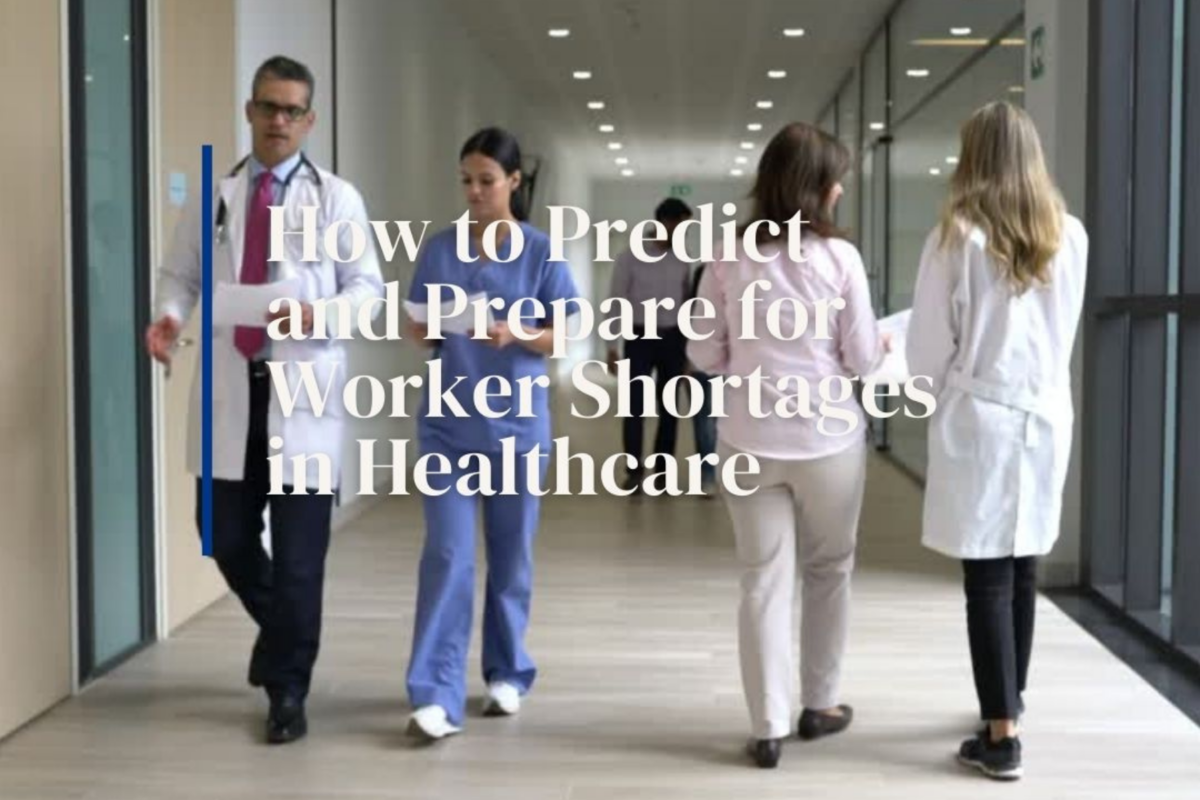In the fast-paced and demanding world of healthcare, every member of the team plays a crucial role in ensuring optimal patient


Managing staff in the healthcare industry is no easy feat. Many healthcare centers and hospitals are forced to keep up with rapid and ever-changing demands. Working with diverse patient and doctor needs amidst internal and external economic changes can result in workforce shortage issues. One of the biggest concerns for healthcare practitioners in what can seem a volatile environment is the rising need for healthcare workers at the same time as shortages.
The complexities of recruiting effectively in such an environment can’t be understated. Healthcare personnel must know how to predict and prepare for worker shortages. In this blog, we’ll discuss viable ways to efficiently manage staff recruitment, all while ensuring the available workforce meets the needs of both workers and patient care quality.

The first step in dealing with workforce shortages is understanding the present state of the labor market. There is no point in looking for new workers without knowing the number and qualifications of existing employees. All roles should be assessed for possible efficiencies. This could involve transitioning from full-time to part-time positions or combining two roles into one. David Orenstein holds a bachelor’s degree of science in healthcare administration and is an HR director at a long-term care facility in San Francisco. He recommends conducting review surveys of available staff to identify gaps and cost-effectively adjust hierarchies.
He believes that looking at the existing workforce is essential in understanding the level of work that needs to be filled. “It’s worth the effort as it can reveal ways to save money while also filling the gaps in the talent pool,” he says. Gathering the current and future demands and plans of the organization is also recommended. A survey conducted by McKesson confirms this and highlights the importance of organizations understanding their already agreed care plans. With knowledge of upcoming changes, hospitals, and healthcare centers can accurately assess the resources and employees that will be required.
Once the existing workforce and possible shifts have been baptized, forecasting becomes vital so that occupier ratios to the number of vacancies and forecasted demands to geographical areas if so needed- can be conducted. Employee motivation and retention should be explored deeply, as detected parts should be shaped. Paired with accurate economic data, recruitment rate forecasting can become easier.
Saloman Amsalem, professor of management and public administration at the Hebrew University of Jerusalem and researcher of healthcare industry staffing says: “Conducting surveys and research to form an understanding of demands for certain timeframes is crucial for healthcare managers. After predicting worker needs, a strategic understanding of how the demography will affect those needs should be considered.” Translated from a recruitment perspective this study investigates factors such as resident movement patterns, population increases, the changing nature of primary service demands, availability of talent, and wages. With these values- verified by market analysis- personnel recruiters can understand which roles, skills, and services should be recruited for. Additionally, forecasts can provide essential insights and define metrics when tracking recruitment movements.
Organizations looking to hire can also look to reliable sources like MLee Healthcare. MLee Healthcare offers a comprehensive suite of integrated recruiting solutions to meet the needs of today’s healthcare organizations. We offer personalized guidance on effective career marketing and job search techniques as well as targeted sourcing programs to connect employers with qualified talent.
With modern, efficient, and up-to-date recruitment processes, healthcare personnel in staffing and recruiting roles should consider manager and staff attitudes to pre-employment, screening processes, and background checks. According to research done by Pace University, of 332 HR professionals surveyed, over three quarts (78%) thought employer-mandated health screening should be mandatory before the offer of employment. Fred Robinson, Health Economics Professor at Pace University explains: “Across the healthcare sector, we’re seeing a growth in preventative healthcare processes. Hospitals and healthcare centers need to make sure that they take into account this new-age policy to ensure workers and patients are not at risk. These preventative processes should also apply to new recruitment policies.”
Healthcare centers and hospitals are not able to afford mistakes in understanding the labor market and needs. The healthcare industry is projected to keep growing as the population size and complexity of medical care also increase. Ensuring an adequate supply of workers is critical to meeting the growing demand. To do this, healthcare employers must understand how to predict health worker shortages and design effective approaches to address these challenges. Utilizing services such as MLee allows for efficient pre-screening of candidates, management, and compliance processes when searching for new hires. With all the possible chaos of healthcare staff shortages, Healthcare facilities need to know how to navigate through them efficiently.